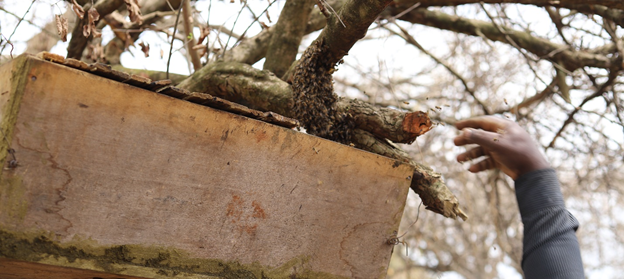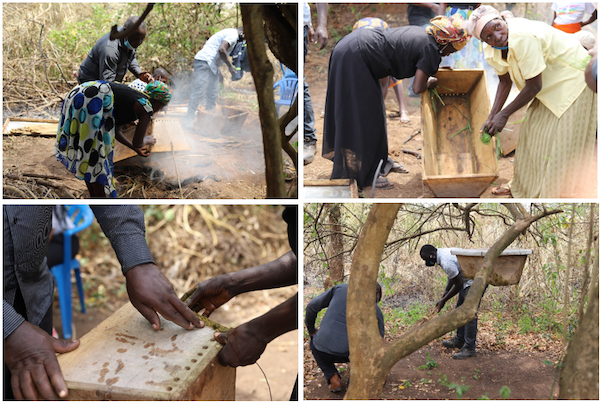
As human populations grow, communities move into habitats, clearing land previously home to wildlife to make room for human settlement and agriculture. This has fueled human-wildlife conflict that is characterized by crop and property damage, human and livestock injury/death; and retaliatory killing of carnivores and elephants.
Beatrice (51 years) lives in Pii-Akeyo, a human-wildlife conflict (HWC) hotspot village located in Diima sub-county in Kiryandongo district. Like all subsistence farmers in her community, Beatrice has been a victim of crop raids from elephants. “I have been unable to sustain my family and pay school fees for my two children (Juliet, 11 years old and Emmanuel, nine years old) because of elephants that raided my maize. Besides that, I get UGX 300 (US$0.08) for each kilogram of maize that I sell. This cannot compare with beekeeping that generates between UGX 8,000 (US$2) and UGX 10,000 ($US3) for a kilogram of honey,” says Beatrice who has opted for beekeeping as an additional source of income, in spite of challenges in beehive colonization and maintenance.
To address these challenges, USAID/Uganda Combating Wildlife Crime (USAID/Uganda CWC) Activity implemented by Wildlife Conservation Society (WCS) has equipped selected beekeeping groups in Diima and Nyamahasa sub-counties in Kiryandongo district, with skills and knowledge to improve colonisation of beehives. The intervention targeted existing beekeeping groups (comprised of men, women, youth and the elderly) that hitherto hardly profited from the business they loved – largely due to lack of skills and low hive colonisation rates. But this will soon be history. As a result of the first training, the groups have registered an improvement in colonization of beehives from 50 to 105 out of 114 beehives, within a period of three weeks after the training.
In addition, the training has been leveraged by the Activity to garner support and participation from the groups to establish beehive fences to deter elephants from crossing to communities. The African honey bee is very aggressive when it perceives that its hive is threatened. When it stings an attacker, it releases pheromones that attract other bees to the site, where they exhibit defensive behaviors until the threat has been neutralized. Studies have shown that if elephants come into contact with beehive fence wire lines, the hives swing releasing swarming bees that sting the elephants and cause them to run away. Dr. Lucy King (2010) also revealed that the sound of swarming bees from a beehive fence causes elephants to move away from the source of the sound, and additionally causes them to make warning calls to others in the herd to keep away.
The USAID/Uganda CWC Activity is working toward establishing a beehive fence consisting of 240 beehives along a section of the Karuma Wildlife Reserve boundary. This initiative will also improve community livelihoods by increasing production levels of various bee products. “We were harvesting few kilograms of honey, but with the extra bee hives, we shall be able to harvest more honey and other bee products that we did not know about, including beeswax, royal jelly, venom and propolis for shoe polish. Thank you for supporting us to have a steady food supply for our families,” says Beatrice upon learning about the intervention.
